The recent trend of Bitcoin can be said to have experienced two extremes:
In mid-June, after the CPI data came out, BTC immediately rose to a large positive line, and the price of the currency approached 70,000 US dollars; after Powell stated that there would be no interest rate cut, it fell from nearly 70,000 to below the 60,000 US dollar mark!
Speaking of the three major benefits of Bitcoin this year:
Spot ETF Bitcoin halving
Bitcoin halving
Federal Reserve rate cut
Two of these three have been achieved.
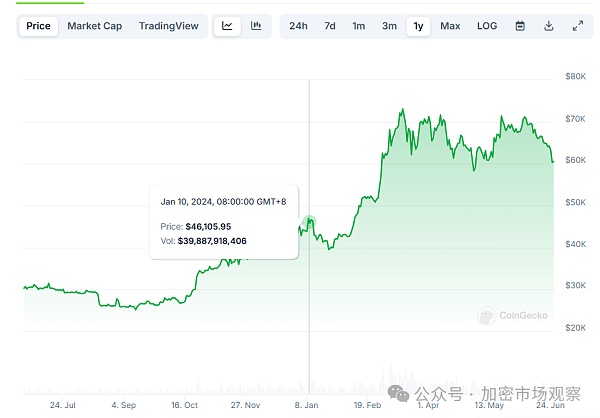
After the Bitcoin spot ETF was approved in January, the price of Bitcoin soared from 30,000 to more than 40,000 US dollars. In April, the Bitcoin halving market, the price of Bitcoin broke through the 60,000 US dollar mark, and then it has been consolidating between 60,000 and 70,000.
If the last positive effect of the Fed's interest rate cut is realized, how much can Bitcoin go?
In order to answer this question, our Da Piaoliang investment research team has also carefully conducted a study, hoping to answer your doubts.
The impact of the last interest rate cut
It seems that the Federal Reserve raises and lowers interest rates at any time. In fact, the last time the Federal Reserve cut interest rates was in 2020. Because of the epidemic, the then Federal Reserve Chairman reduced the interest rate of US debt to 0 in one step.
The last time was in the second half of 2019. The time between the two times was only about half a year, which can be regarded as the same cycle.
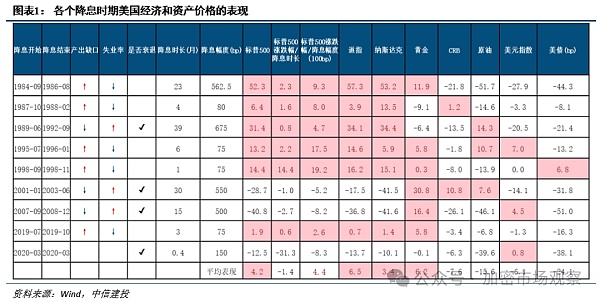
The previous interest rate cut can be traced back to the world financial crisis from 2007 to 2008. At that time, Bitcoin had not yet been created. Therefore, we will start with the interest rate cut in 2019 to see how powerful the interest rate of the Federal Reserve is.
The first interest rate cut in 2019
The interest rate cut in 2019 started in July and ended in October. We open the Bitcoin trend chart of Coingeico and see that the trend of Bitcoin in 2019 is like this:
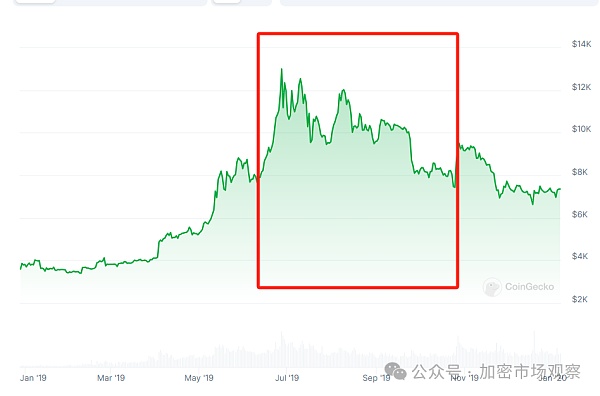
The part in the red frame is the interest rate cut cycle.
If the Fed's benchmark interest rate is put in, it looks like this:
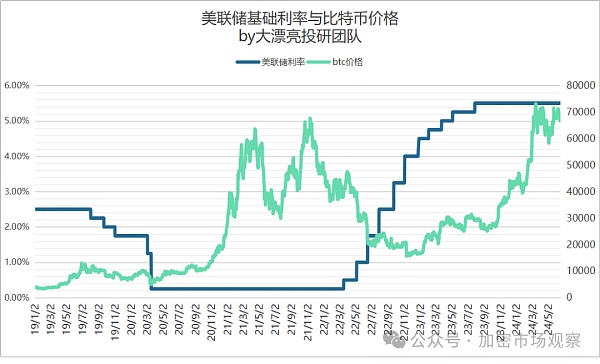
In 2019, the price of Bitcoin was 3,000 to 4,000 US dollars at the beginning of the year, and it had doubled to 8,000 US dollars before the interest rate cut.
As soon as the interest rate cut news was announced, the price of Bitcoin reached a high of 10,000 US dollars in July, and then turned down.
So from this trend, the Fed's interest rate cut does not seem to be very powerful.
The second interest rate cut in 2020
Then let's take a look at the second interest rate cut in 2020, which was completed in March.
On March 3, 2020, the interest rate was first cut by 50 basis points. Then on March 15, the Federal Reserve held another FOMC meeting and lowered the target range of the federal funds rate by 1 percentage point to between 0% and 0.25%.
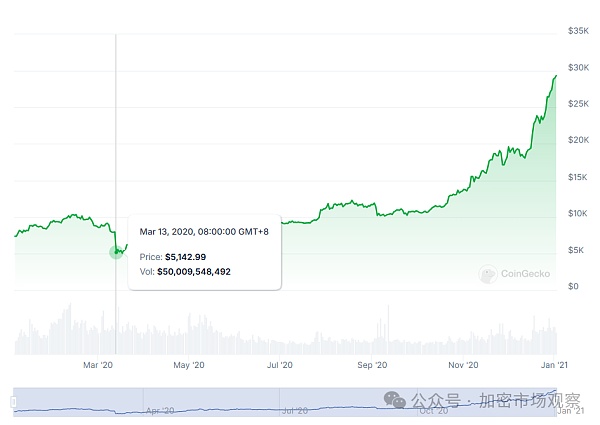
But we saw that the price of Bitcoin was only more than 5,000 US dollars at that time, and there was no big scene of rising in response. Instead, it started to rise all the way at the end of the year, breaking through the 30,000 US dollar mark by the end of the year.
In this cycle of Bitcoin's rise, the Federal Reserve's interest rate has been lying on the floor without moving.
Relationship between US Treasury yields and Bitcoin
After seeing the impact of the previous two interest rate cuts on BTC, it seems that there is not much impact. Some friends say that US Treasury bonds are the direct competitor for diverting funds. Should we pull out the US Treasury yields to see?
It is not impossible. Our investment research partners opened the official website of the US Treasury Department and collected a wave of data:
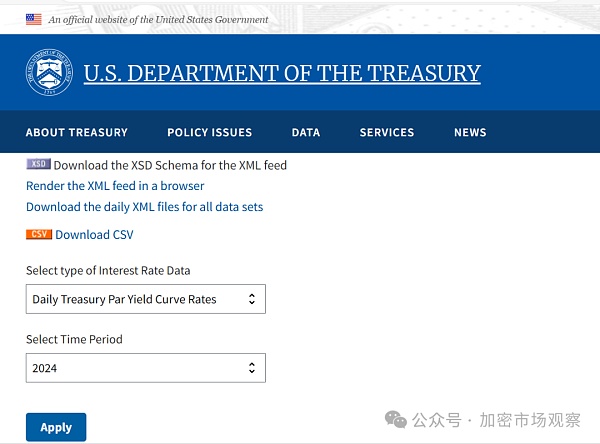
This should be the most authoritative data, right? We manually pulled a chart of the five-year Treasury yield and BTC price:

From the chart, we can see that in the 2019 interest rate cut, the Treasury yield dropped from 3% to below 2%, and the price of Bitcoin rose from more than 3,000 to around 10,000 US dollars.
However, as the Treasury yield further declined, the price of Bitcoin did not skyrocket, but began to react more than half a year later.
This makes people wonder, does interest really have an impact on the price of Bitcoin? Are there other influencing factors?
The relationship between inflation rate and Bitcoin
Our beautiful investment research team is a professional financial background.
We usually can't just look at the interest rate alone when analyzing the macro, but also look at it together with the inflation rate, that is, CPI.
Also, a five-year CPI, that is, inflation data and BTC price trend chart is pulled:
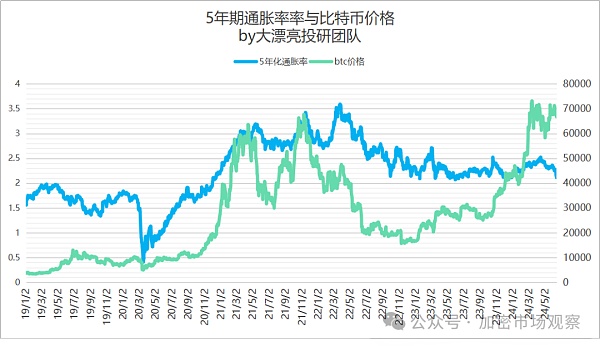
This chart seems to be a bit interesting. When Bitcoin soared at the end of 20, it was exactly when the US CPI soared.
Some people asked why the 5-year period was pulled. In fact, the friends of the Da Piaoliang investment research team are also helpless, because there are a lot of data on the official website of the US Treasury Department, and only the 5-year period is the most complete, and multiple indicators can be compared horizontally.
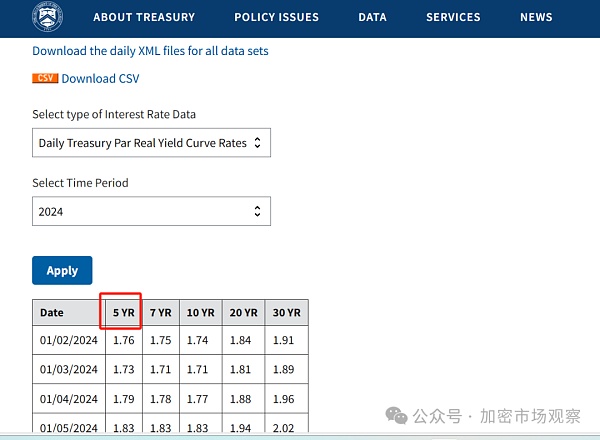
However, as we can see from the trend chart above, only the five-year data is the most complete.
The impact of real interest rates
When analyzing, our investment research partners found that another data seemed to better reflect the impact of Bitcoin prices and interest rates. That is the real interest rate.
What is the real interest rate?
We take the interest rate shown on the face of the U.S. Treasury bond and subtract the inflation rate to get the real interest rate. Then let's take a look at the relationship between the real interest rate of 5-year Treasury bonds and Bitcoin:
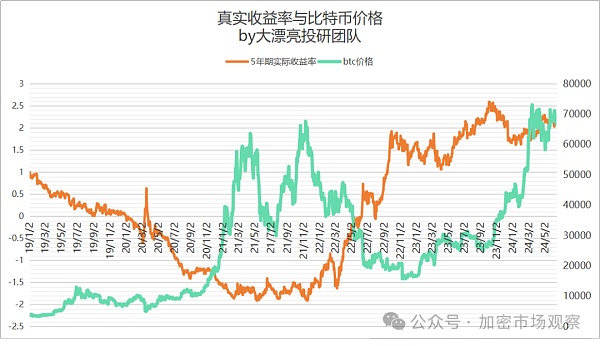
Sharp-eyed friends will find this chart interesting:
In the first half of 2019, although the Federal Reserve did not cut interest rates, the inflation rate was rising, which led to a decline in the real yield of US Treasury bonds, and the corresponding Bitcoin began to rise again. In the second half of 2019, although the Federal Reserve cut interest rates, the inflation rate was also falling at that time, so the real yield remained in the range of 0~0.5%, and the price of Bitcoin was relatively flat.
In 2021, due to the epidemic, the inflation rate soared, but at the same time, the US Treasury interest rate remained low, so the real yield of US Treasury bonds was negative 1.1%. This has led to a large amount of funds abandoning US debt to find other alternatives to inflation, and the price of Bitcoin has naturally ushered in a wave of skyrocketing.
Dear friends, you should know that not only gold and Bitcoin are anti-inflation, but US debt itself is also an investment product designed by the United States to resist inflation.
Let's take a look at the cycle after 2022. As the United States began to raise interest rates violently, the actual yield of US debt turned from negative to positive. At this time, US debt can outperform inflation again, and the corresponding Bitcoin has also ushered in a wave of plunges.
The scale of US debt is unsustainable?
At this point, the scale of US debt is getting bigger and bigger. Judging from this trend, how long can the high yield of US debt be maintained?
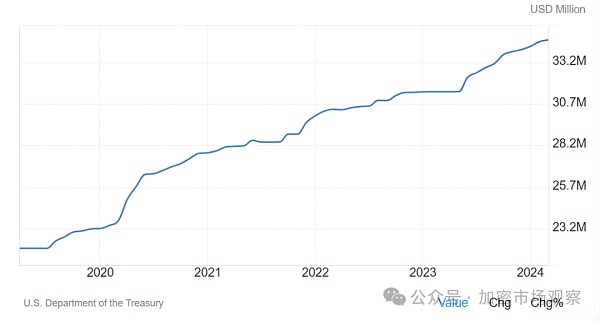
In the past five years, the scale of US debt has increased from 22 trillion to 34 trillion. Corresponding to the scale of US GDP, it has been hovering around 20 trillion in recent years:
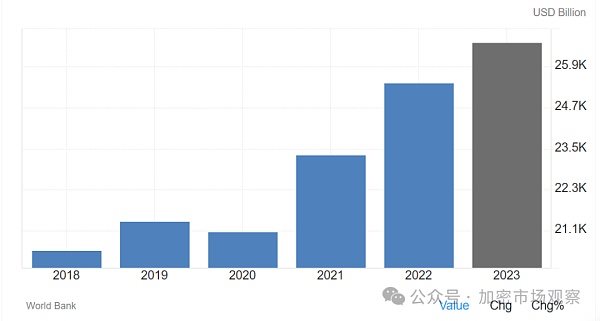
Therefore, many people believe that it is impossible for the United States to issue US debt faster than GDP indefinitely for a long time, otherwise the taxes collected by the United States may not be enough to pay the interest in the long run.
If it really comes to this, the only way is to cut interest rates. By then, the trend of the actual yield of US bonds may repeat the scene of three years ago:
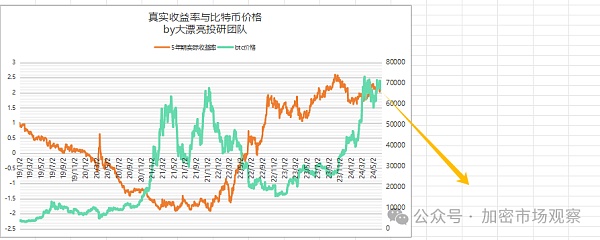
How much can it rise after the interest rate cut?
Let me summarize the factors that affect the rise and fall of BTC:
First of all, you can't just look at the interest rate of the Federal Reserve, you have to look at it together with the CPI, that is, the inflation rate, so the best indicator is the actual yield.

In general, as long as you think the inflation rate will not come down, then hold Bitcoin firmly!
Secondly, the scale of US debt cannot be higher than the growth rate of GDP for a long time. The current scale is already extremely large. In the past few days, the US government's debt interest expenditure has exceeded military expenditure for the first time. Therefore, the status of US debt as an anti-inflation investment product may be challenged in the future. This is a good opportunity for our Bitcoin, and then our Bitcoin's status as electronic gold will be truly recognized.
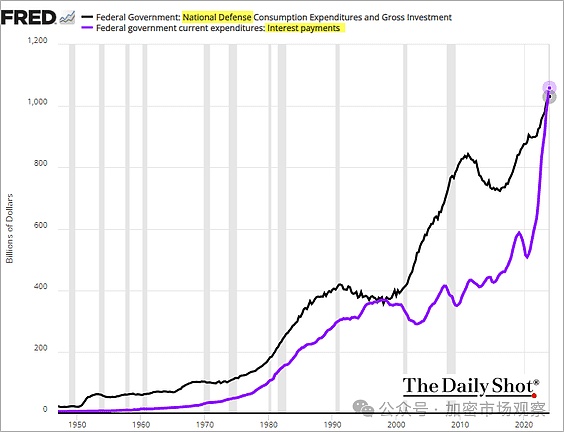
Finally, the United States in November this year may be a key time point in this cycle. On the one hand, it is because the market generally believes that interest rates will start to cut before November, and on the other hand, the national debt will also be the core issue of the debate between the candidates of the two parties.

(P.S. Biden is said to withdraw from the election, and Trump will definitely tighten the scale of U.S. debt!)
Once there is a strong commitment to long-term debt restrictions, Bitcoin will usher in another bull market. Before the Fed's interest rate hike in 2021, Bitcoin has actually reached the $60,000 mark.
If you let Da Piaoliang guess a number, if the current inflation rate remains unchanged and the Fed's interest rate can be reduced to 0, then Bitcoin will definitely double to more than $120,000.
But it is still a bit unlikely that the interest rate will reach 0. If the interest rate is reduced by half to a few percent, it is estimated that the price of Bitcoin can reach about $80,000 to $100,000.
 Cheng Yuan
Cheng Yuan





















